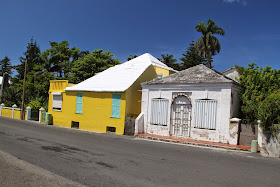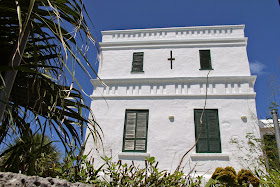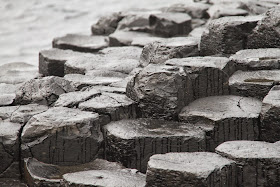St. George's Town was first settled in 1612, the first permanent British settlement on the islands of Bermuda and its capital until 1815. Some claim it is the oldest continually inhabited English city in the New World. Originally called New London, it was a stopping place for the ships of the Virginia company on their way to Jamestown and other settlements.
 |
| Ordnance Island is connected to St. George's by a short causeway, and much of the waterfront is reclaimed land. |
With quaint names and narrow alleys, the town is fun to visit, and prettily decorated in a traditional style, with the typical Bermudian water-collecting roofs on display.
 |
| The main town square, King's Square, is bounded by the 1782 Town Hall to the east, the Bermuda National Trust Museum to the north-west, and Ordnance Island. |
 |
| The location of hangings, Ordnance Islands guns signify its past, but is now used as a cruise ship terminal. |
 Other historic landmark sites to see in the town include the first stone building, the 1620 State House, the Old Rectory, St, Peter's Church, the Tucker House, and the Mitchell House (housing the St. George's Historical Society Museum, and the Featherbed Alley Printshop Museum), along with the oldest structure on the island, the L-shaped Bridge House. Along with its fortifications, it was designated a UNESCO World Heritage Site in 2000.
Other historic landmark sites to see in the town include the first stone building, the 1620 State House, the Old Rectory, St, Peter's Church, the Tucker House, and the Mitchell House (housing the St. George's Historical Society Museum, and the Featherbed Alley Printshop Museum), along with the oldest structure on the island, the L-shaped Bridge House. Along with its fortifications, it was designated a UNESCO World Heritage Site in 2000.http://en.wikipedia.org/wiki/St._George's,_Bermuda
http://www.bermuda-attractions.com/bermuda2_000028.htm
http://whc.unesco.org/en/list/983

























































